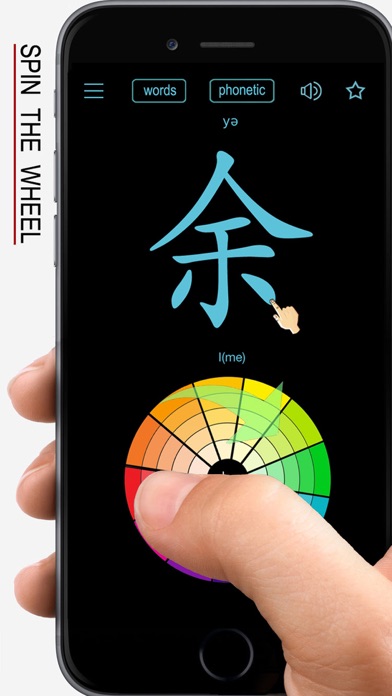
2,500 MOST-USED KOREAN HANJA !
LETS LEARN HOW TO HAND-WRITE THEM !
THIS APP BREAKS THEM DOWN STROKE BY STROKE !
• SPIN THE WHEEL TO EXPLORE
Its so easy and natural.
• ADD TO FAVORITES
Save the word you like for the future use.
• REAL HUMAN VOICE
Not robotic.
• ENGLISH MEANINGS
All of the words have their meanings in English.
• KOREAN ARTS & CULTURE
Banknotes, coins and poems.
• OFF-LINE INDEPENDENT
Once downloaded, you dont need internet to use the app. All audios and pictures are integrated within.
You can select the word in alphabetical order (English meanings) by clicking “words” in the menu bar. Basic everyday Korean words!
Click on the "phonetic" button in the menu bar, you can look up words phonetically.
In spoken language, the /r/ sound is sometimes dropped when it is located at the front of a word. For example,
練習(련습) becomes 연습.
The checked syllables ending in the stop consonants are /p/, /t/, /k/. For example,
國家(국가) sounds /guk ga/.
The final consonant /k/ is checked, stopped abruptly. It is not pronounced. So do not pronounce like /gu+k/.
Unlike Japanese, the Korean language doesn’t distinguish long and short vowels.
The Hanja is mostly like the traditional Chinese characters. But there are few differences.
Korean: 强 敎 郞 凉 爲
Taiwan: 強 教 郎 涼 為
The vowel ㅐ sounds stronger than the loose ㅔ. But in spoken language, the difference is very subtle and interchangeable. Likewise, the ㅒ and ㅖ vowels.
e: ㅐ ㅔ
ye: ㅒ ㅖ
The consonant /ㄹ/ is either /r/ or /l/. For example, /ra/ or /la/ has the same phonetic value. They are equal to 라.
The sequence is in the Korean alphabetical order. There are more than 1800 Hanja and 2500 words in the app.
가:家, 佳, 街,...
...
하:下, 夏, 賀,...
If you are interested in how to write the Korean words (Hangul), please refer to my another app "Learn Korean Handwriting !"
There are over 77 million people who speak Korean worldwide. Its vocabulary is highly influenced by Chinese. The grammar is more similar to Mongolian, Manchu or Japanese languages.



